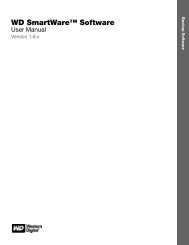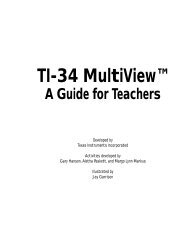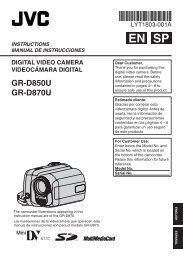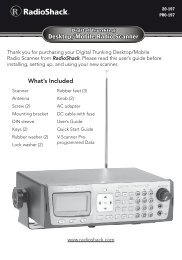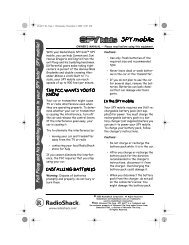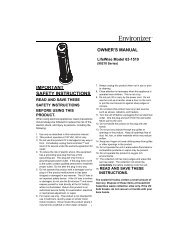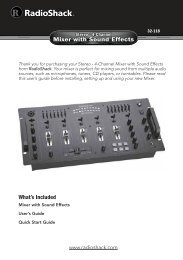Digital Trunking â Desktop/Mobile Radio Scanner - Radio Shack
Digital Trunking â Desktop/Mobile Radio Scanner - Radio Shack
Digital Trunking â Desktop/Mobile Radio Scanner - Radio Shack
You also want an ePaper? Increase the reach of your titles
YUMPU automatically turns print PDFs into web optimized ePapers that Google loves.
Additional Information<br />
4. The confirmation menu for the power-on password setting<br />
appears. Press NO softkey.<br />
5. Enter 0000 in the password setting menu and press OK softkey.<br />
Note: In the initial password setting menu characters “0000” are<br />
always displayed. Enter 0000 while these characters “0000” are<br />
displayed<br />
If you forget the password<br />
If you forget your password, you must initialize the scanner to be<br />
able to operate it. This operation will result in the clearing of your<br />
programmed data and the loss of any custom changes you have<br />
made to the radio’s global parameters. See “Initializing the <strong>Scanner</strong> to<br />
Factory Defaults” on page 92.<br />
Birdie Frequencies<br />
Every scanner has birdie frequencies. Birdies are signals created inside<br />
the scanner’s receiver, which may interfere with transmissions on the<br />
same frequencies. If you program one of these frequencies, you hear<br />
only noise on that frequency. If the interference is not severe, you<br />
might be able to turn Sqelch clockwise to omit the birdie.<br />
To find the birdies in your scanner, disconnect the antenna and<br />
moving it away from the scanner. Make sure that no other nearby<br />
radio or TV sets are turned on near the scanner. Use the Tune<br />
function and scan every frequency range from its lowest frequency to<br />
the highest. Occasionally, the searching will stop as if it had found a<br />
signal, often without any sound. This is a birdie. Make a list of all the<br />
birdies in your scanner for future reference.<br />
FCC Notice<br />
Additional Information<br />
This equipment has been tested and found to comply with the limits<br />
for a scanning receiver, pursuant to Part 15 of the FCC Rules. These<br />
limits are designed to provide reasonable protection against harmful<br />
interference in a residential installation. This equipment generates,<br />
uses and can radiate radio frequency energy and, if not installed<br />
and used in accordance with the instructions, may cause harmful<br />
interference to radio communications.<br />
However, there is no guarantee that interference will not occur in a<br />
particular installation. If this equipment does cause harmful interference<br />
to radio or television reception, which can be determined by turning<br />
the equipment off and on, the user is encouraged to try to correct the<br />
interference by one or more of the following measures:<br />
• Reorient or relocate the receiving antenna.<br />
• Increase the separation between the equipment and receiver.<br />
• Connect the equipment into an outlet on a circuit different from<br />
that to which the receiver is connected.<br />
This device complies with part 15 of the FCC Rules. Operation is<br />
subject to the following two conditions: (1) This device may not cause<br />
harmful interference, and (2) this device must accept any interference<br />
received, including interference that may cause undesired operation.<br />
Scanning Legally<br />
Your scanner covers frequencies used by many different groups<br />
including police and fire departments, ambulance services,<br />
government agencies, private companies, amateur radio services,<br />
military operations, pager services, and wireline (telephone and<br />
telegraph) service providers. It is legal to listen to almost every<br />
transmission your scanner can receive. However, there are some<br />
transmissions you should never intentionally listen to. These include:<br />
• Telephone conversations (cellular, cordless, or other private<br />
means of telephone signal transmission)<br />
82<br />
83



